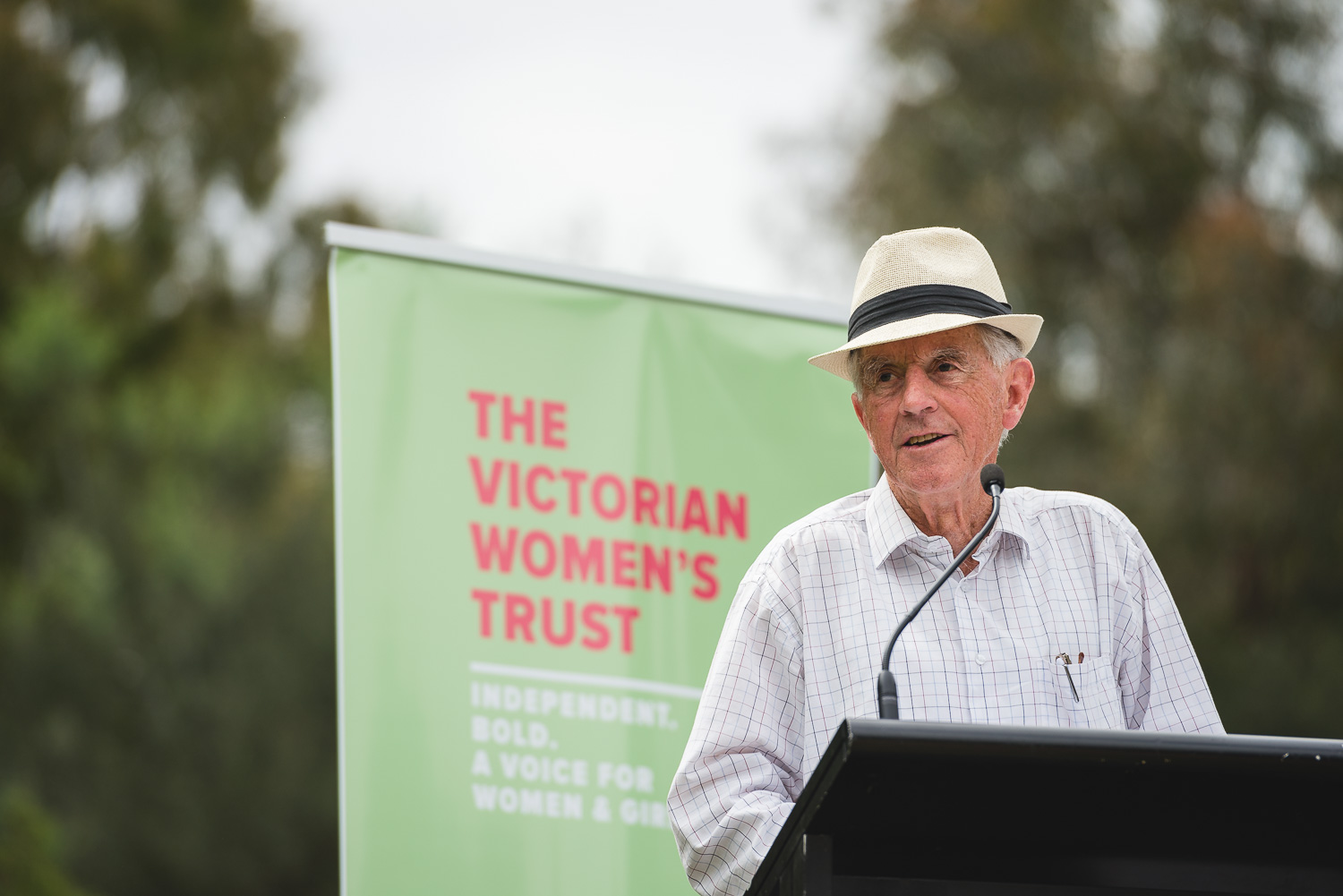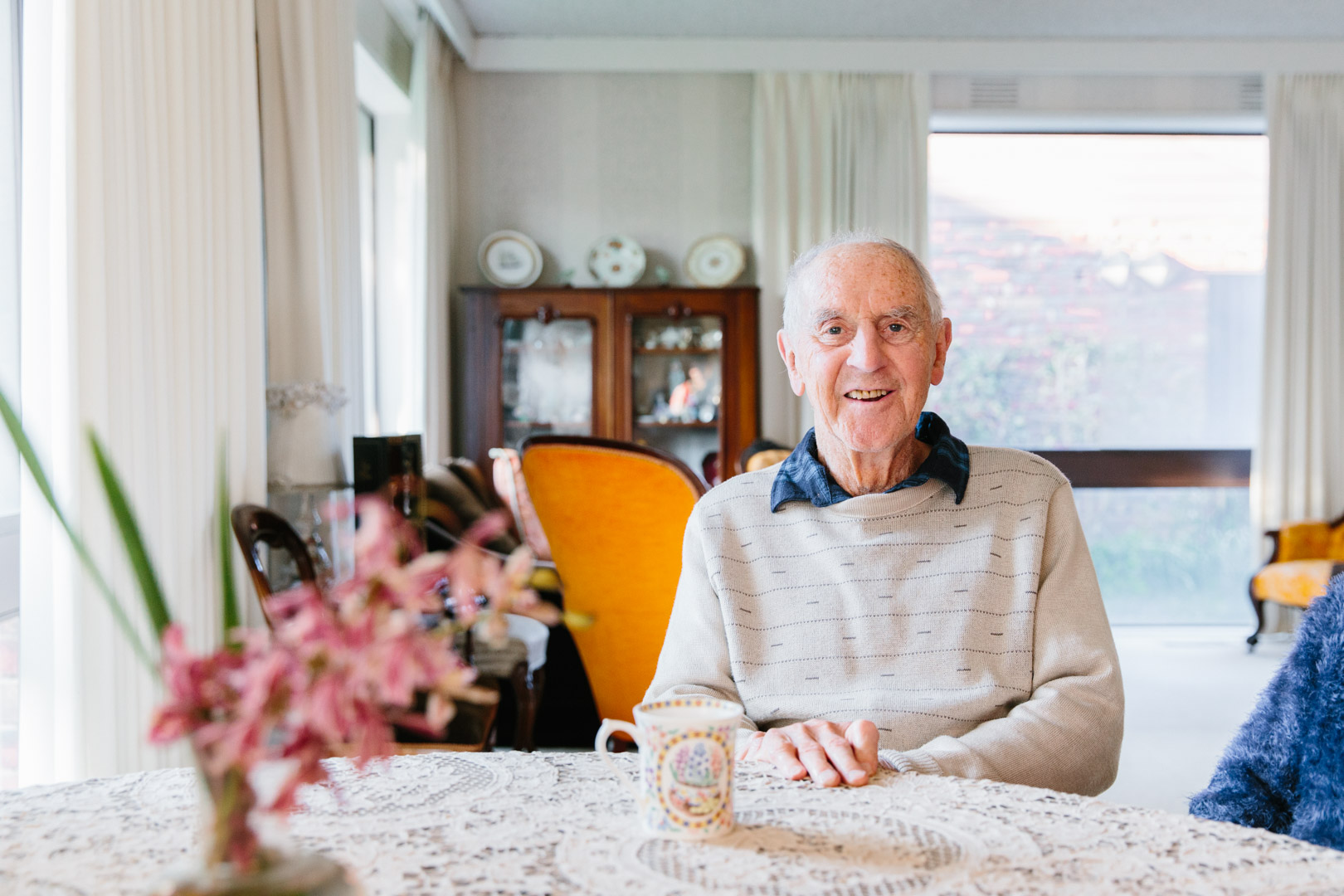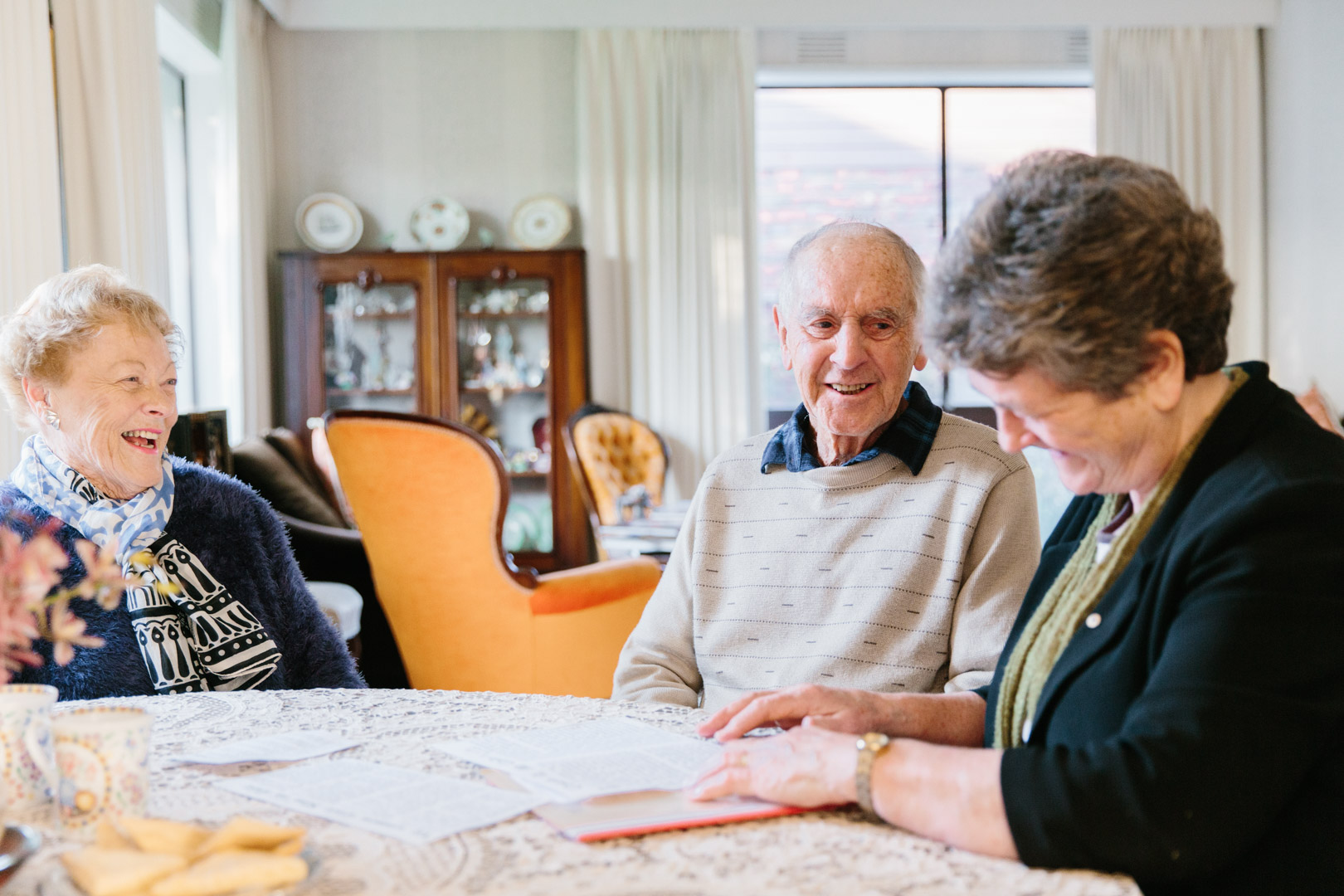Watch the live-stream here.
I first worked with John in 1977, when he was Shadow Minister for Planning, helping with speeches and doing research. We had serious fun together sleuthing some highly dubious land deals, like Mt Ridley.
Working at close quarters gave me an early measure of the man. He had a keen, plainly-wrapped intellect; and an impressive grasp of issues. He was ethical, fair minded, collegial and hard-working. There was no bluff or bluster; no over-sized ego. He had a wry, at times, wicked sense of humour.
But above all, he was deeply respectful, toward his life partner, Nancye, his children, Joanne, John and James, toward others and to me. For a woman in her late twenties, navigating what was then very much a ‘man’s world’, the respect John accorded me was both validating and empowering.
**********************************
The coverage of John’s legacy over the past weeks has rightly acknowledged high profile achievements – the National Tennis Centre, the TAC, Southbank, shop trading hours. On its own, this account doesn’t do justice to his three terms as Premier. Neither does it capture the broad sweep of his government’s reform agenda.
But especially missing from this narrative so far is John’s personal commitment and political contribution to achieving a fairer world for women.

John Cain at the Victorian Women’s Trust 30th Birthday celebration.
Women have been hugely under-represented in our national and state parliament over the past century and more but this doesn’t mean they are disinterested observers. Within the same patriarchal culture which has devalued women and sought to control what they should and shouldn’t do, women have agitated and struggled long and hard, across the political spectrum, to secure basic human rights and reforms. Always from a lesser position of power, progress for women has been halting in the face of stiff rear guard action. It is no surprise that the hearts of many women skip a beat when they bear witness to a government intent on addressing gendered inequality.
A perspective on the span of time is crucial here today. So far, we have experienced 165 years of Victorian parliamentary history; and 120 years federally. There have been 48 Victorian Premiers and 30 Australian Prime Ministers. Out of these 78 leaders, only two have been women — Joan Kirner and Julia Gillard.
Wistfully, in my lifetime and that of my mother’s (who is three weeks off turning 100), we can count on just two hands the numbers of male-led Victorian and federal governments that have elevated gender equality as part of their core business; and backed it with policy and action.
Of these handfuls, two governments have a special status – because they broke through on gender equality like none before. The Whitlam Government was one. John Cain’s was the other.
Long before he became Premier, John had a deep and abiding belief in fairness, equity, access and justice. These precepts readily translated into guiding principles of his administration.
As a teenager in the 1940’s, he was discomfited by the sexism, racism and sectarianism he saw around him. Guided by his parents, John and Dorothea, he was determined in his own no-fuss way to help build a society free of this destructiveness.
He recognised the unequal treatment women had received through time. He believed women’s unpaid work in the home and the care of their children made them economically vulnerable. Discrimination on the basis of gender and race was offensive to him. He also knew that equal and full participation could not be achieved when women are unsafe.
As ALP leader, he pledged his government would work for equality of opportunity. His government would seek to enhance women’s status, further their participation in public life and ensure that they received equal benefits from government services.
On this quest, he led from the front
He held the Ministry for Women’s Affairs for the eight years he served as Premier.
This was no hollow, cynical gesture, something women have had to endure in other places at other times.
He meant business.
He challenged, and stared down, the all-male institutions of the Melbourne Cricket Club and the Victoria Racing Club, over their century-plus-more practice of excluding women from their inner sanctums.

Nancye and John Cain celebrating Labor’s victory in the Victorian tally room 1982.
Building on Pauline Toner’s effort as Shadow Minister for Women, John made it clear these bodies had no right to exclude half the population from public land. ‘If Nancye can’t accompany me, I’m not going,’ he told them.
A hundred and more years of male privilege, entitlement and gender segregation came crushing down, at least overtly. John later recalled that some of the powers-that-be did it with more grace and goodwill than others.
There were history-making firsts for women
John knew that no matter how many men of merit sit around the table, governments made up almost exclusively of men miss the policy mark when they consciously or sub-consciously exclude women.
Pauline Toner became the first Victorian female to enter Cabinet, joining forces with many talented men.
Caroline Hogg and Joan Kirner joined the Cabinet in the second term; Kay Setches and Maureen Lyster in the third.
This crew of Cabinet women commanded immense experience in education, local government, community service and the union movement. Along with the slowly increasing numbers of Labor women entering parliament, they brought the lived experience of so many people across communities, especially women, to government policy-making.
John wanted groups such as women and young people to be brought under the representative umbrella. Through the Women’s Advisory Council, Aboriginal women, young women, women with disabilities and country women joined others in giving voice to their issues and concerns.
The Women’s Policy Co-ordination Unit, sitting within Premier and Cabinet, carried out first-time consultations on major issues for women, such as the Women in the Home consultation and the Care of School Aged Children.
Caroline Hogg, with the collegial support of Evan Walker as Minister for Agriculture, actively facilitated the creation of the Rural Women’s Network, the first of its kind in Victoria and indeed Australia. Women around the State loved it, thrilled by its Women on Farm Gatherings and the networking support it provided for women going through the tough times that come with working the land.
LandCare also came into being, another first for Victoria and later Australia, emerging as it did from exceptional bipartisan collaboration between two women, Joan Kirner, as Minister for Conservation Forests and Lands and Heather Mitchell, from the Victorian Farmers’ Federation.
For the first time in our State’s history, women were appointed to such diverse bodies as The State Electricity Commission of Victoria; the Workers’ Compensation Board; the Metropolitan Transit Authority; the Victorian Law Foundation; MCG Trustees; the Planning Appeals Board, the Occupational Health and Safety Commission.
Permanent part-time work within the teaching profession provided female teachers with more flexible working conditions.
Affirmative Action Plans were put in place in the Teaching Service to increase the numbers of women in leadership and management. Equal Opportunity Units were established in many agencies.
Twenty-five Technical Schools became co-educational in John’s first term of government.
The Women’s Information Referral and Exchange (WIRE) was also a first-term achievement, remaining a mighty organisation to this day.
The Victorian Women’s Trust was also established in the first term, an organisation unique in Australia and one of the first such agencies globally.
Milestone legislation sought greater protections for women
Among an array of legislation, the Equal Opportunity Act 1977,established under the Hamer Government, was strengthened.
The 1984 Act proscribed sports clubs from discriminating on the basis of sex or marital status.
A definition of sexual harassment was introduced to allow complaints to be made about discrimination on that basis.
Changes were made to The Crimes Act 1987 that expanded options for victims of family violence (who are, let’s be clear, mainly women and children) to seek protection through Intervention Orders.
There were so many defining community initiatives to better support women
Thousands of long-day child care places in centres around the State, as well as family day-care places and preschool and play-centre places were provided.
The Neighbourhood House network was expanded, helping overcome women’s social isolation as well as facilitating community connection; computers arrived in these Neighbourhood Houses and Community Learning Centres to assist women’s access to information on jobs and courses.
Aboriginal Liaison positions were funded to support women at the Mercy and the Royal Childrens’ Hospitals. A Migrant Women’s Resource Centre was established.
There were more women’s refuges. There was support for Women’s publishing initiatives. Young women were actively encouraged to take up apprenticeships. Energy rebates made life a bit easier for low income women.
In breaking through on gender equality in these wide-ranging ways, the Cain administration marked out a road for others to follow
We delude ourselves if we think that equality can be achieved through gradual erosion of the burdensome, inequitable structures and institutions which hold our society back.
Rather, it requires systemic change, positive disruption and challenges to the dominant order. Governments can do only so much. The rest must come from us.
John Cain did his most. As a lawyer, he knew the importance of precedent.
His administration paved the way for further milestone advances in Victoria, including the hard-won affirmative action policy within his own party; the Royal Commission into Family Violence, the achievement of gender parity in the current Andrews Cabinet, where female Ministers hold portfolios such as transport and infrastructure; and the historic, Australian-first Gender Equality Bill now before the Victorian parliament.
***************************

John Cain in his home in 2019.
Since his resignation from the leadership in 1990, John and I remained in regular contact. He was a great telephoner. Our conversations ranged wide. We laughed a lot and disagreed about some things, respectfully of course.
But there were two issues where we were in sync – one was our increasing disquiet about the decline of public trust in government and the failure to govern for the common good – as evidenced by short-termism, policy capture by vested interests, adversarial politics and corrupt behaviour. The other was our shared belief that inequality is at the core of many of our problems; that ridding our society of sexism and racism will invariably take us all to a better, more enlightened place.
John understood that respect was the bedrock of gender equality.
He acknowledged men have had to adjust to the idea of working alongside women, changes he realised were difficult, even painful but essential to achieving gender fairness and social justice.
In November 2016, at the age of 85, he registered for our own Breakthrough for Gender Equality conference at the Melbourne Town Hall, joining over 1000 women (with an average age of 35), and putting himself very much in the minority.
He sat in on a session conducted by acclaimed humourist, Judith Lucy. Mid-way through her comedy routine, she spied John and seized the opportunity for some mischief. ‘Sir, what’s your name? ‘John’. ’Hi John, what has brought you here? John: ‘I want to see what goes on in these places.’ Judith: ‘You want to see what goes on in these places? ‘There’s going to be a cauldron….aah, you could be sacrificed a little later on…No, we are very happy to have you here John.’
He chuckled.
Here he was – an older man at ease with himself; at ease in the company of women; and largely at peace with the fact that he had given his best over a lifetime to make the world a fairer place for all, and especially for women.
Three days later he wrote to us acknowledging the work that had gone into the event. He was concerned that ‘in many areas around the issue of equality this society of ours is going backwards. You made us aware of the need and urgency for revised approaches’ he wrote. He added, ‘what we learnt in government was that persistence and determination over the long-term is required to effect significant reform around important issues.’
Stay the course, never give up, was his message. He would urge us all today to do the same.
Watch the live stream of the John Cain state memorial service as captured by the Department of Premier and Cabinet. Mary Crooks AO delivers her eulogy at around the 29 minute mark.
 After an extensive public policy career, Mary became the Executive Director of the Victorian Women’s Trust in 1996. She has designed and led ground-breaking community engagement initiatives, such as the Purple Sage Project and Our Watermark Australia. In June 2012, Mary was appointed an Officer of the Order of Australia, for her distinguished services to public policy and advocacy for the advancement of women. In 2016, Mary won the Public Policy category as part of the AFR/Westpac’s 100 Women of Influence for her years of work in shaping public policy in Australia.
After an extensive public policy career, Mary became the Executive Director of the Victorian Women’s Trust in 1996. She has designed and led ground-breaking community engagement initiatives, such as the Purple Sage Project and Our Watermark Australia. In June 2012, Mary was appointed an Officer of the Order of Australia, for her distinguished services to public policy and advocacy for the advancement of women. In 2016, Mary won the Public Policy category as part of the AFR/Westpac’s 100 Women of Influence for her years of work in shaping public policy in Australia.
